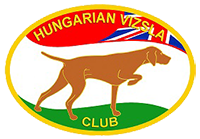Treatment
It is a very rare disease, signs are very non specific, but usually start with skin lesions that unfortunately look like any “normal ” skin wound & goes on to develop renal failure which is unfortunately often fatal. This is why it is such a devastating disease to those dogs that get it. It is very hard to diagnose as there are no specific signs or tests and is invariably fatal.
While no vaccination has been found, some dogs can fight off the disease, and live with minimal damage. The most a veterinarian could do is treat the kidney failure. Since kidney failure treatment is not permanent, the dog invariably dies soon after. Some UK dogs with Alabama rot have been successfully treated since 2013. A webinar on Alabama rot by the Royal Veterinary College on 11 February 2015 was tutored by David Walker of Anderson Moores Veterinary Specialists.
The Take Home Message:
There is nothing we can do to prevent a dog from catching it (that we know of yet), but it is very rare, nor can it be diagnosed with a specific test.
If your dog has a skin lesion (especially legs/paws or even ulcers or lesions in the mouth possibly caused by licking infected wounds), and seems unwell then you should seek veterinary advice immediately.
Anderson Moores Veterinary Specialists (Hampshire) continue to collect information of all confirmed cases of Alabama Rot (cutaneous and renal glomerular vasculopathy – CRGV) from across the UK in the hope to find the cause and ultimately a cure for this dreadful condition. As the evidence suggests so far that CRGV is more likely to be a seasonal condition as the number of reported cases has dropped during this period of warmer weather with just one confirmed case between 1st April – 30th May from Blandford Forum, Dorset.
For further information click on the links below.
Information Sheet for Owners – Updated May 2015 http://www.andersonmoores.com/uploads/files/AKI CRGV NEWSLETTER May 2015.pdf
Cutaneous and renal glomerular vasculopathy/Alabama rot – Veterinary information sheet
Cutaneous and renal glomerular vasculopathy (CRGV) is a disease of unknown aetiology, often characterised by ulceration of the distal extremities in dogs. It is variably associated with clinically significant renal azotaemia secondary to acute kidney injury (AKI). CRGV has previously been reported in a case series of greyhounds in the USA, a Great Dane in Germany and a greyhound within the UK.
Since November 2012, more than sixty dogs across the UK have been identified with clinicopathological findings similar to those reported in greyhounds in the USA in the 1980’s. Skin lesions, typically appearing as ulcers or erosions on the distal limbs, ventrum or oral cavity/muzzle, commonly appear less than a week before clinical signs attributable to AKI.
The major renal histopathological lesion reported in CRGV is thrombotic microangiopathy (TMA). Thrombotic microangiopathies are characterised by inflammation and damage to vascular endothelium, leading to widespread formation of microthrombi and resultant consumptive thrombocytopaenia.
A range of breeds have been identified with CRGV in the UK suggesting the disease does not solely affect greyhounds. There does not appear to be a breed, body weight, sex or age predilection. Cases have been identified across the whole of UK and there may be a seasonal distribution with cases being identified between November and June.
Thrombocytopaenia has been identified in approximately half of the affected dogs and is thought to be the result of widespread microthrombi. Mild anaemia, neutrophilia and hyperbilirubinaemia have also been seen in around a quarter of affected dogs. A significant proportion of dogs affected by CRGV are non azotaemic at presentation, if you are presented with a dog with a skin lesion of unknown cause and you or the owner are concerned about CRGV please refer to our ‘non azotaemic cutaneous and renal glomerular vasculopathy – advice sheet for vets’ for further information.
A definitive diagnosis of CRGV is made by histopathological assessment of the kidneys +/- skin. The aetiology of CRGV remains unknown at this time and common causes of AKI should be considered and excluded when presented with a dog that may be suffering from CRGV.
Current knowledge suggests management should be as for any dog presenting with AKI of unknown cause. Advice should be sought when presented with a patient with suspected CRGV.
If you are concerned that a case you have been presented with may be suffering from CRGV please feel free to contact Anderson Moores Veterinary Specialists (01962 767920; david@andersonmoores.com). We continue to collate data on all cases nationally. We can provide histopathology free of charge on suspected cases but please contact us prior to sending tissue.
Advice Leaflet
Anderson Moores Veterinary Practice in Hampshire have produced an advice leaflet about AR and have kindly given the HVC and the Charity permission to place the leaflet on the HV Web sites. As a precaution, their advice is that the owners of all dogs, particularly in the south, are to ensure that the dog’s feet, legs, chest and stomach are bathed each time upon their return home to prevent the possible spread of any parts that have been in contact with any possible/potentially infected ground. See CRGV vet update below.
